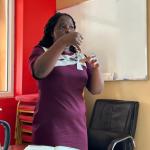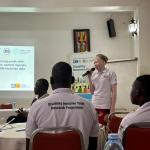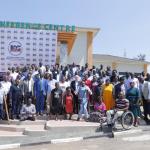The NCPD has National, District/City/Municipality and Sub- County/Town Council/Division structures as provided for in the Persons with Disabilities Act 2020. At the National level, the Council is comprised of 24 National organizations of persons with disabilities, Federation of Uganda Employers, Members of Parliament representing Persons with Disabilities and he respective Ministries as below:
A) FULL MEMBERS comprising:
Eight regional representatives of Persons with Disabilities
(4 male and 4 female)
- One Parent of a Child with Disability
- One Professional and experienced Person in Disability
- One representative of Youth with Disability
- One representative of the Federation of Uganda Employers
- One representative of NGOs working with Persons with Disabilities
- One representative of Members of Parliament
- Two Persons with Visual Impairment.
B) EX-OFFICIO MEMBERS
Eight representatives of Ministries of: Local Government; Housing and Communications; Education and Sports; Health; Gender, Labour, and Social Development; Finance, Planning and Economic Development. The Ministry representatives are appointed to provide their varied expertise and guidance to the Council. The National Council is the Governance and policy-renewable once. The above governance set up is replicated at the District, City, Municipality, Division, Town, and Sub-County levels, where the respective Local Government Chairpersons once
TARGET BENEFICIARIES
Through its structures, the NCPD is interested in all public and civil society interventions, as well as private business ventures running in the entire country. The coverage of NCPD is therefore national. Accordingly, the institution categorizes its target population into three as follows:
- Primary Target: This includes all service providers – Government and non-government actors.
- Secondary Target: This comprises of persons with disability who benefit from the monitoring and advocacy of NCPD.
- Tertiary Target: This includes care takers, family members and close associates of persons with disabilities who benefit from the interventions of NCPD by virtue of their association with them.




